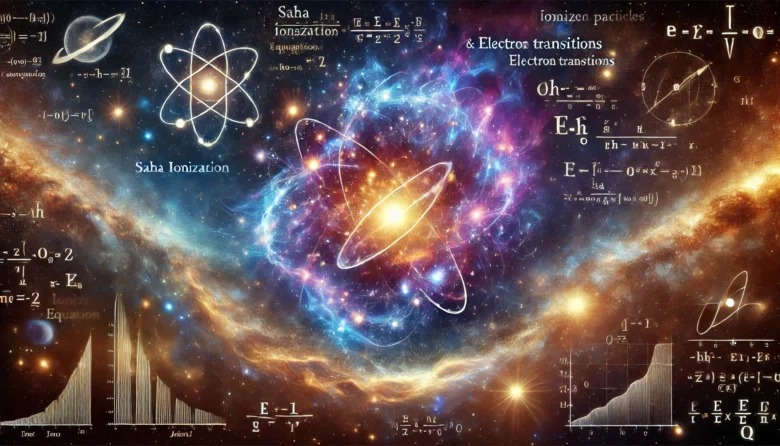Did you know that a single formula revolutionized our understanding of the stars? Meghnad Saha, an Indian astrophysicist, developed the Saha Ionization Equation, a groundbreaking discovery that linked physics and astronomy in a way never seen before. Often regarded as one of the most brilliant scientific minds of the 20th century, Saha’s work not only unlocked the secrets of stellar atmospheres but also helped propel India into the global scientific arena. Despite his incredible contributions, it remains a poignant fact that Saha was nominated for the Nobel Prize multiple times but never won — a glaring omission in the annals of science.
Early Life and Education
Meghnad Saha was born on October 6, 1893, in Shaoratoli, a small village near Dhaka in present-day Bangladesh. Born into a modest family, Saha faced significant financial hardships but showed an exceptional aptitude for learning from a young age. Determined to overcome the socio-economic barriers of his time, he pursued education fervently, often studying under dim oil lamps after long days of labour.
His academic journey began at Dhaka Collegiate School, where his brilliance earned him a scholarship to Presidency College in Kolkata. At Presidency, he studied under the tutelage of stalwarts like Jagadish Chandra Bose and Prafulla Chandra Ray, whose mentorship helped shape his scientific acumen. Despite facing systemic discrimination for being from a lower-caste family, Saha graduated with top honours in mathematics and physics, showcasing a resilience that would define his career.

A Pivotal Moment
The turning point in Saha’s life came during his postgraduate studies when he began exploring the application of thermodynamics to astrophysics. In the early 1920s, astrophysics was still in its infancy, with many questions about stellar composition and energy processes unanswered. Saha, inspired by the works of physicists like Max Planck and Albert Einstein, embarked on a mission to decode the mysteries of the stars.
In 1920, Saha published a paper introducing the Saha Ionization Equation, which mathematically described the ionization states of elements in stellar atmospheres based on temperature and pressure. This equation provided the scientific framework to analyze the spectra of stars, enabling astronomers to determine their chemical composition and temperatures for the first time. The significance of this work cannot be overstated; it fundamentally changed how we study and understand the universe.
An Interesting Story
One of the most fascinating stories about Meghnad Saha is from his days as a student at Presidency College. Saha, along with a few classmates, was barred from attending the English canteen because of his lower-caste background. Instead of accepting this injustice, Saha and his friends chose to set up their own “parallel canteen,” which became popular among students of all backgrounds. This act of quiet defiance not only highlighted Saha’s courage but also his ability to challenge societal norms while focusing on his education. This incident demonstrated the determination and resilience that would later define his scientific and personal achievements.
Challenges and Triumphs
Despite his monumental discovery, Saha faced numerous challenges. Recognition came slowly, partly due to his position as a scientist from colonial India. Additionally, the lack of advanced research facilities in India limited his ability to further his work. Undeterred, Saha collaborated with leading international scientists and continued his research, eventually earning a fellowship at the Royal Society in 1927.
Saha also played a key role in establishing the Indian Science Congress Association and the National Academy of Sciences, India. As an advocate for scientific development, he championed the creation of research institutions and educational reforms, believing that a strong foundation in science was essential for India’s progress.
The Legacy of an Unsung Hero
Meghnad Saha’s legacy extends far beyond his equation. He was a pioneer in using science for societal development, contributing significantly to fields like nuclear physics and river management. His advocacy led to the establishment of the Saha Institute of Nuclear Physics in Kolkata, which remains a hub for advanced research.
Saha also entered politics, serving as a member of the Indian Parliament. He used his platform to push for policies that emphasized the importance of scientific education and technological advancement. However, his contributions to science and society remain overshadowed by his omission from the Nobel Prize, a fact lamented by many historians and scientists.
Conclusion
Meghnad Saha’s life exemplifies the impact of perseverance and the transformative power of science. From a humble village in Bengal to the global stage of astrophysics, Saha’s journey inspires us to question, explore, and innovate. His work not only unveiled the mysteries of the cosmos but also laid the foundation for India’s scientific renaissance.
As we look up at the stars, let’s remember the man who helped us understand their light. Let Saha’s story be a call to action for investing in education, fostering curiosity, and recognizing the brilliance that can emerge from even the most challenging circumstances.
A Quote to Remember
“Scientific temper is the essence of progress. Without it, society stagnates.” — Meghnad Saha
Author’s Note
Meghnad Saha’s story resonated deeply with me because it’s a reminder of how determination and intellect can break barriers. His contributions continue to inspire scientists worldwide, and I hope his story encourages readers to appreciate the unsung heroes of science. Let’s strive to celebrate such pioneers and ensure their legacies remain alive.
G.C., Ecosociosphere contributor.
References for Further Reading
- Saha Institute of Nuclear Physics
- Royal Society Biography of Meghnad Saha
- Indian Science & Technology
- Meghnad Saha (Astrophysicist) – Age, Birthday, Bio, Facts, Family, Net Worth, Height & More | AllFamous.org. https://allfamous.org/people/meghnad-saha-18931006.html




